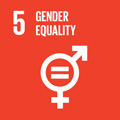- Docente: Annalisa Pelizza
- Credits: 6
- Language: Italian
- Teaching Mode: Traditional lectures
- Campus: Bologna
- Corso: First cycle degree programme (L) in Communication Sciences (cod. 8885)
Learning outcomes
Students learn basic tools to analyze the different forms and the several channels of contemporary communication (interpersonal and face-to-face communication, media communication, web and social media).
Course contents
- Theories and models for the study of communication
- Communication and interaction in everyday life
- Theories and uses of mass communication, individualization and networked communities
- Information society and theories underpinning social media
- The social scenarios connected to the changes introduced by technological innovations and digital platforms
- Digital sociology
- Case analysis of social practices related to nowadays communication channels
The integrated course includes the same program, divided into two parts:
The first part is mainly dedicated to providing basic concepts and tools for a sociological reading of communication
The second part focuses on:
1. the impact of communication technologies (analog and digital) on the social order and the sphere of information
2. emerging trends in digital sociology
Readings/Bibliography
The reader is divided into weeks and each week-related texts must be read before the classes. This is expected to allow quality interaction in the classroom and to participate in the activities.
Settimana 1, 1-3 Ottobre – Introduzione alla Sociologia della Comunicazione. Concetti sociologici concernenti la comunicazione
Settimana 2, 8-10 Ottobre – Interazionismo simbolico e rituale dell’interazione
Goffman, E. (1997) La vita quotidiana come rappresentazione. Bologna: Il Mulino, pp. 11-93.
Settimana 3, 15-17 Ottobre – La definizione della situazione e l’approccio etnometodologico
Goffman, E. (2001) Frame Analysis. Roma: Armando, pp. 23-64.
Schutz, A. (1979) Saggi Sociologici. Torino: UTET, pp. 401-418
Settimana 4, 22-24 Ottobre – Sociologia e teorie dei mezzi di comunicazione di massa
Wolf, M. (1985/1993) Teorie delle Comunicazioni di Massa. Milano: Bompiano, pp. 16-100.
Settimana 5, 29-31 Ottobre – Il contesto d’uso delle comunicazioni di massa
Grandi, R. (1994) I mass media fra testo e contesto: informazione, pubblicità, intrattenimento, consumo sotto analisi. Milano: Lupetti, pp. 42-52; 139-154.
Thompson, J.B. (1998) Mezzi di Comunicazione e Modernità. Bologna: Il Mulino: 121-168.
Settimana 6, 5-7 Novembre – L’individualizzazione della comunicazione e la nascita delle comunitá in rete
Castells, M. (2002) La nascita della società in rete. Milano: EGEA, pp. 390-419.
Pelizza, A. (2018) Communities at a Crossroads. Material semiotics for online sociability in the fade of cyberculture. Amsterdam: Institute of Networked Cultures, pp. 65-79. Disponibile open access su https://networkcultures.org/blog/publication/tod-28-communities-at-a-crossroads/
Settimana 7, 12-13 Novembre – La societá dell’informazione, le teorie di rete e la socio-metrica
Mattelart, A. (2001) Storia della Societá dell’Informazione. Torino: Einaudi, pp. 3-15; 45-89.
SECONDA PARTE – Le tecnologie della comunicazione
Settimana 8, 19-21 Novembre – L’impatto delle tecnologie della comunicazione sull’ordine sociale
McLuhan, M. (1962) La Galassia Gutenberg. Roma: Armando, pp. 54-67; 89-97;
Eisenstein, E. (1995) Le Rivoluzioni del Libro. L’invenzione della stampa e la nascita dell’età moderna. 55-102.
Goody. J. e Watt, I. (2000) “Le Conseguenze dell’Alfabetizzazione” in Giglioli, P.P. e Fele, G. Linguaggio e Contesto Sociale. Bologna: Il Mulino, pp. 285-331
Settimana 9, 26-27 Novembre – L’impatto delle piattaforme sul sistema dell’informazione
Autorità per le Garanzie nelle Comunicazioni (2018) News vs. Fake nel Sistema dell’Informazione. Interim report indagine conoscitiva Del. 309/16/cons, pp. i-ix, 74-106. Disponibile su: https://www.agcom.it/documents/10179/12791486/Pubblicazione+23-11-2018/93869b4f-0a8d-4380-aad2-c10a0e426d83?version=1.0
Lovink, G. (2016) L'abisso dei social media: nuove reti oltre l'economia dei like. Milano: Università Bocconi, pp. 1-34; 51-66.
Settimana 10, 3-5 dicembre – Sociologia digitale
Pelizza, A. (2019) Dispense di sociologia digitale. Bologna: Università di Bologna
Settimana 11, 10-12 Dicembre – No lezioni
Settimana 12, 17-19 Dicembre – Ulteriori casi di studio e preparazione all’esame
Teaching methods
The teaching is made of lectures, presentations and class discussions, empirical analysis of case studies. The aim of presentations and classroom analysis is to develop the understanding and analytical application of the concepts described during lectures.
Assessment methods
The integrated course is made of one single exam.
Written test with open and closed questions on the texts indicated in the bibliography for the exam.
The questions tend to verify:
a) the understanding of what the various authors of the teaching materials write;
b) the reflexive appropriation of the concepts and methods exposed, also through empirical examples.
Teaching tools
When possible, the teaching material presented in class is made available to students in electronic format through the teaching platform of the University of Bologna. In any case, texts are available at the FILCOM library. In class, computer with beamer. Software to facilitate classroom interaction.
Office hours
See the website of Annalisa Pelizza
SDGs



This teaching activity contributes to the achievement of the Sustainable Development Goals of the UN 2030 Agenda.
